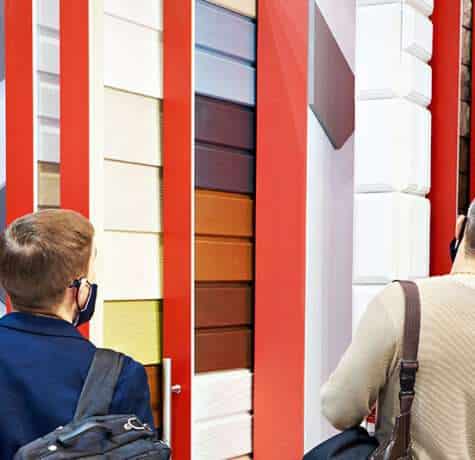Siding is used to protect and beautify your home. It’s an excellent investment for any homeowner, especially if you live in an area with harsh weather conditions. If you’re looking to ensure that your home stands the test of time, then consider replacing your old siding with a new one.
There are many different types of siding to choose from, making it challenging to find the best kind for your house. In any case, the siding of your choice must be functional, protective, secure, and must boost your home’s curb appeal.

Know What Benefits and Features of Sidings
Different sidings come with different features and benefits. As such, you must do your research and make a good decision.
Here is a list of all the features you must look for in a siding material:
- Durability against weather elements
- Unique curb appeal
- Affordability
- Color options
- Impact-resistance
- Fire and insect-resistance
- Protection against leaks
- Long life span
- Low-maintenance
- Simple installation and replacement
- Good brand reviews
Evaluate the Pros and Cons of Siding Material Options
The following is a comprehensive breakdown of the pros and cons of different siding materials.
Vinyl: Vinyl is economical and comes in a multitude of color options. On the downside, it lacks durability as compared to other premium materials.
Fiber Cement: Fiber cement is very versatile and durable. It can mimic the look of cement, vinyl, and wood siding. It combats harsh weather well, comes with customizable colors, and can last between 30 and 50 years. However, fiber cement is expensive and high-maintenance.
LP Smartside: LP Smartside is a solid and durable hardwood that comes with a 50-year warranty. Although more expensive, LP Smartside lasts over twice as long as cheaper vinyl.
Wood: Real wood siding and shingles are unbeatable in terms of aesthetics. Wood siding is low-maintenance, eco-friendly, and can be easily painted or stained if you wish to perk up its curb appeal. But remember that wood siding is quite expensive and high-maintenance and requires regular re-staining or re-painting.
Metal: Metal siding is very durable and low-maintenance but is quite pricey. It offers excellent resistance against weather elements and other issues like insects, fires, and more. But metal siding comes with the risk of rusting in wet and humid climates and has high installation costs.
Brick: Bricks are strong, timeless, and versatile. They are low-maintenance, energy-efficient, and fire-resistant. But, bricks can be relatively expensive as compared to other materials and may require re-mortaring.
Stone Veneer: Stone veneer is designed to look like natural stone; however, it is more lightweight, making it more affordable and easier to install. On the downside, stone veneer is susceptible to moisture and leakage if they come loose.
Choose the Best Color Pairings
Materials like brick and metal come with limited color options, but vinyl, fiber cement, wood, and more are more versatile and offer a wide range of customized hues. When choosing a siding color, be sure it matches your home’s accents so that it looks aesthetically welcoming.

